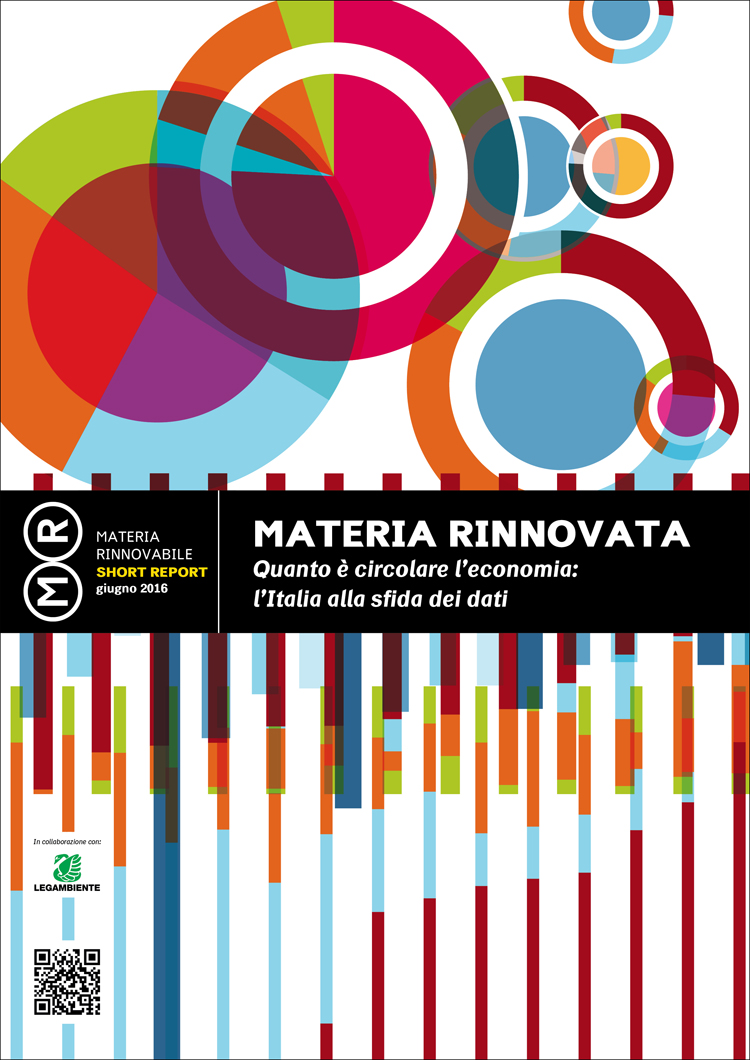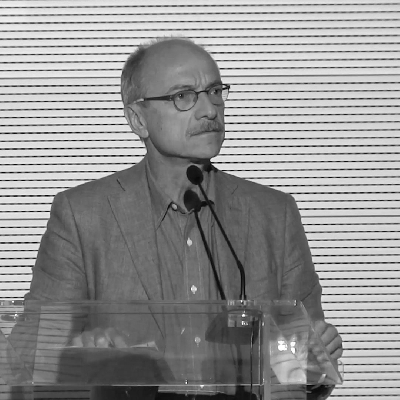This is the snapshot of the “dark half” of the circular economy. The flows coming into the urban, agricultural and industrial circuits are under the spotlight and they are carefully measured and weighed out. The outgoing flows raise less interest. How much renewable matter is truly renewed? And how much is wasted?
We know the Italian energy balance down to the last Kilowatt hour, we are aware of the exact number of mobile phones and kilos of sugar put on the market are no mystery to us, but we don’t know where all the rubble of the building they are demolishing in our neighbourhood and the orange peels we are eating will end up.
Up until now, this strategy of knowledge has been triggered by obvious reasons: on the one hand (the incoming flow) there were goods worth money and jobs, on the other (outgoing flow) a shapeless mass that mostly constituted a problem. For decades, we thought the value of a certain good vanished when, for various reasons (broken, no longer fashionable, not to our taste), it lost its functions.
But are the economic judgements leading to weighing differently the input and output of our production system still valid? It’s very difficult to give a definitive answer because the change is still ongoing: in some sectors, the circular economy is more mature and cheaper, in others, less so. But the very fact the the process started – supported by European certification – has changed the overall picture, triggering an adjustment of the measurement system so that we may have the means to be able to judge. Finding information is a costly business, but it pays off if it helps increase the efficiency of the production circuit. Today, alongside the old (and still valid) need to check the damage caused by bad waste management, there is the opportunity to capitalize on part of the advantages the European Union envisaged in the Circular Economy Package: annual savings of €600 billion for the production sector, 580,000 new jobs and between 2-4% greenhouse gas emission reduction.
Moreover, the Ellen MacArthur Foundation and the McKinsey Center for Business and Environment estimate the weight of the new lifestyles linked to the circular economy. For instance, nowadays, European cars spend 92% of their time stationary while the development of car sharing and of vehicles with a higher environmental performance can reduce costs by 75% per kilometer travelled. And the advanced building models halve building costs. Overall, by 2030, such innovations are expected to make the European GDP grow by 7%.
This is why it has become increasingly important to ask ourselves the right questions, in order to understand what is lacking in the monitoring of substances that for some are waste and for others can become resources. How circular is the Italian economy? How competitive are we as a sector? How many billions of euro will we be able to save and how many new jobs envisaged by the Commission will we be able to achieve?
Starting from next year, Materia Rinnovata (“Renewed Matter”) will measure the growth of the Italian economy based on rebirth of matter, aims at highlighting the potential of sustainability’s “second leg”: the smart use of matter, i.e. the fight against wasting everything that flows under our eyes, taking up the form of a good only for a very short time.

So far, precious information on the destiny of waste materials are still lacking. As for Italy, part of the country is ranking high in Europe: in sectors such as packaging, tyres, used oils, matter circularity is high, figures are reliable and the environmental and economic advantages are certified. Although we are talking about quantities of little over one tenth of the total waste flow. What about the remaining nine tenths?
Figures about large sectors of industrial and agricultural waste do not tell us with enough accuracy the destiny of waste. There is collective disattention, a deep-rooted neglect of the problem. If we imagine to ask ten people chosen at random what percentage of waste is recycled and recovered in Italy, some would not have the faintest idea, others would probably answer with a double-digit figure, perhaps around 40%, because the only data popularised by the media are those of urban separate waste collection, where such percentage is over 40%. But we are only talking about packaging and not much else within the urban domain. Collective perception of problems (very clear) and the potential (very fuzzy) of waste is limited to that: concentrated on one part of the approximately 30 million tonnes that overall come from cities, while the waste total accounts for about 161 million tonnes.
Besides, waste is not collected separately just to give it a pleasurable tour around (a longer and more costly one from an environmental and energy points of view, by the way). The pay-off of this added effort is represented by the advantages of reusing, recycling, energy recovery which, for some sectors, today must reach 50% and rising thanks to the implementation of the Circualr Economy Package: such target can no longer be postponed, not least for the targets set for the climate change and the economic crisis. Thinking of honouring such commitments just by looking at the energy efficiency and renewable energy means running on just one leg.
The potential for economic, energy and environemntal savings the circular economy can provide is extraordinary. According to the European Commission, if 95% of mobile phones were collected, over €1 billion in savings of manufacturing materials would be achieved. If light commercial vehicles were reused, €6.4 billion in materials and €140 million in energy costs per year would be saved, while reducing greenhouse gas emissions by 6.3 million tonnes. If the policies envisaged by the Circular Economy Package were implemented, a good share of food waste would be reduced. In Europe, such waste amount to 180 kg per head per year: a third of the total food production.
What is needed to achieve such potential? The analysis of the available figures and of those lacking offers an indication: there are two sector blocks governed in two different ways. The first includes industrial sectors whose book-keeping is based on the principle of EPR (Extended Producer Responsibility) and already provide good recycling and reusing performances, which are also improving. While with the second, there is little interest in innovative practices for matter recovery and the information on the destiny of waste is scanty.
Up until now, little attention has been paid to the difference between these two blocks, because the theme of renewability has only recently become topical and because the definitions used are mostly incomprehensible to most (e.g. EPR and Compliance Scheme): it would be appropriate to start talking about “collective systems” or “responsible systems.” But the underpinning idea is a powerful one: to stop considering what is no longer used as waste something that all of a sudden becomes a nuisance and must be quickly disposed of.
Every year we use a huge amount of matter that is extracted from nature using large amounts of energy, water, land, which then enters a complex transformation cycle; in the form of goods, it offers us services, for examples the opportunity to read this article. Can we ignore the consequences of our purchases, the impact of the matter that we bought will have on our own lives or that of our neighbours’? And can those who profited from that good disregard them? The European Union replied with a resounding “no”: there is a diversified and common responsibility. Those who bring commodities onto the market take responsibility for their entire lifecycle, including the moment when the paper or the screen you are reading these words on will cease to be useful and you will feel the urge to throw away. Those who bought a commodity take responsibility for the act of disposing of the object they no longer intend to use.
Is this new ethics more expensive for businesses? In the scenario adopted by Brussels, where the potential of the new urban “mines” and industries created through looking with a fresh pair of eyes waste are redesigned, the advantages outweigh the disadvantages because companies gain competitivity and image, and ultimately profits as well. A modern enterprise has everything to gain from taking responsibility for the matter they utilize both because they optimize resources and because otherwise there would be a rift between their point of view and that of the buyer. People may choose not to buy goods or services provided by those who make a profit from their sales while the community pays the costs ensuing from the disposal of such goods.
Actually, this is what happens in the energy field, since fossil fuels guarantee oil companies huge profits and, according to the United Nations, they impose $5,000 billion in costs on the community. But this very delay in the energy field offers matter the opportunity to take the lead in the eco(logical) and eco(nomic) challenge for sustainability and therefore for the new market. The benefits for the environment are obvious. Now let’s try and measure the economic advantages and imagine ways to achieve more fruitful objectives for everyone.
Short Report “Materia Rinnovata. Quanto è circolare l’economia: l’Italia alla sfida dei dati,” June 2016; www.materiarinnovabile.it/pubblicazioni


